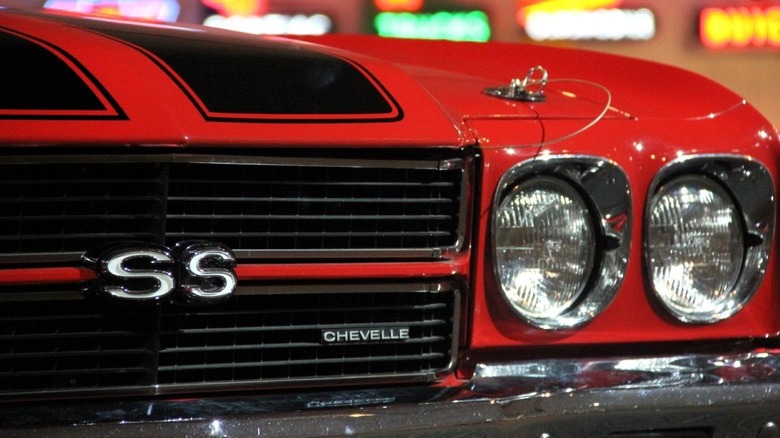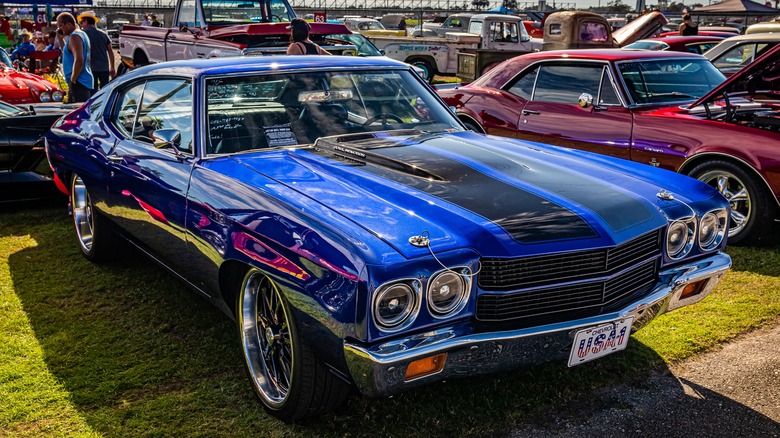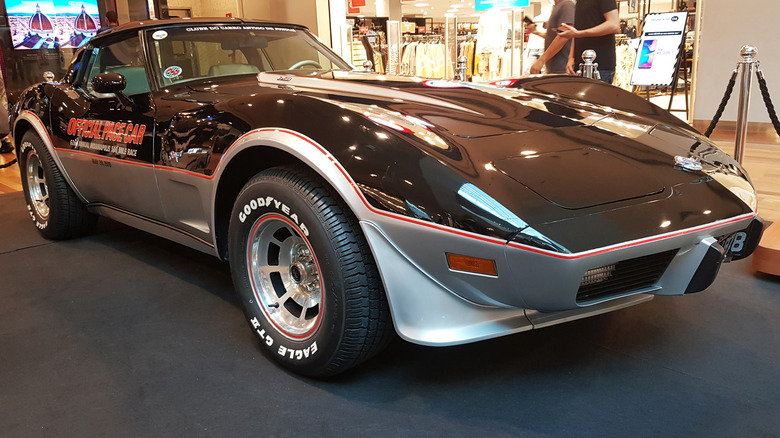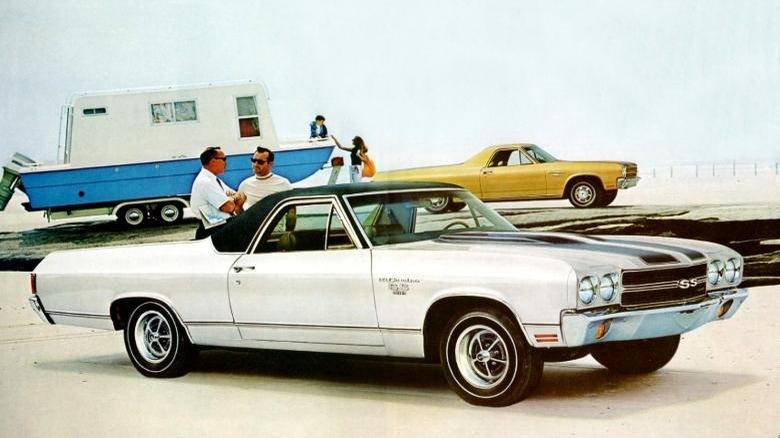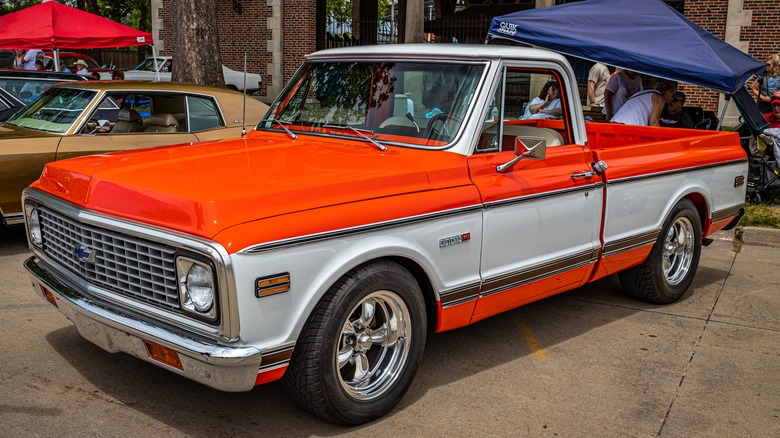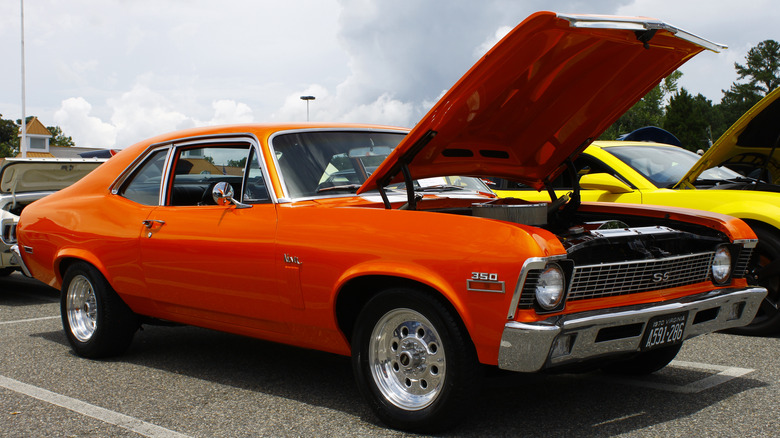5 Of The Most Iconic Chevrolets From The 1970s
The 1970s were a great decade for Chevrolet, with the Detroit-based automaker making remarkable despite a fuel crisis, tightening emissions regulations, and external threats from an influx of more fuel-efficient Japanese vehicles. Earlier on, Chevy hit a home run with the Chevrolet Monte Carlo, which debuted for the 1970 model year. The Monte Carlo was a top performer throughout the '70s, moving hundreds of thousands of units every year, with sales topping out at 411,038 units in 1977.
While the Monte Carlo's may be one of Chevy's more underappreciated cars today, there are other models from the '70s that have remained well-known and respected. These popular Chevrolets have maintained an enduring appeal that has solidified their status as some of the most highly coveted and collectible vehicles among enthusiasts and collectors. Here's a look at the five most Iconic Chevrolets from the 1970s and why they're still so popular now.
1970 Chevelle SS 454 LS6
The 1970 Chevelle Super Sport (SS) 454 LS6 is widely regarded as one of the most impressive Chevy muscle cars of all time, with its revised sheet metal and phenomenal performance being major factors in its success. It packed a 454 cubic-inch (7.4-liter) big-block V8 engine that generated 450 horsepower and 500 lb-ft of torque. This not only became the pinnacle of Chevelle SS performance, but it also made the 1970 Chevelle SS 454 LS6 the most powerful production car of its day.
For context, buyers who opted for the 1970 Chevelle LS5 had access to a less powerful version of the 454 big-block, which supplied just 360 hp. Those who settled for the SS 396 had to content themselves with a 402 cubic-inch engine that was good for either 350 or 375 horsepower.
The competition also paled in comparison, even when it came to other GM brands. A 1970 Pontiac GTO with the 455 high-output Ram Air IV engine developed only 360 hp, while a 1970 Oldsmobile 442 with the W-30 package had 370 horsepower. Of the available options, the 1970 Plymouth Barracuda came closest to matching the Chevelle SS 454 LS6's power, with its iconic 426 cubic-inch Hemi V8 providing 425 hp.
1978 Corvette C3 Pace Car Edition
In a sense, the 1978 Corvette C3 Pace Car Edition perfectly embodies the timeless appeal we've come to associate with the Corvette. It was introduced to celebrate the model's 25th anniversary and marked the first time a Corvette was selected to lead the field at the Indianapolis 500.
Chevy's original production plan called for a run of 300 Indy Pace Car replica editions of the C3, but the sheer volume of consumer interest led them to ultimately produce 6,502 units. Decades later, the C3 Pace Car Edition's charm and captivating appeal remain, cementing its status as one of the special edition Chevy Corvettes that will always turn heads.
Under the hood, the 1978 Corvette C3 Pace Car Edition had a 350 cubic-inch (5.7-liter) small-block V8 engine that made 220 horsepower and 260 lb-ft of torque at the highest trim level. While that may seem modest compared to modern standards, it was impressive for its time.
1970 Chevrolet El Camino SS
Being based on the Chevelle meant the third-generation Chevrolet El Camino benefitted from its stupendous power. It was available in the SS396 trim, which offered a 402 cubic-inch (6.6-liter) V8 that generated 350 horsepower, but the real showstopper was the massive 454 big-block V8 that delivered a jaw-dropping 450 hp. That output gave the 1970 Chevrolet El Camino SS 454 LS6 a clear edge in performance over its rival, the Ford Ranchero GT 429 Super Cobra Jet.
In addition to the El Camino SS 454 LS6's massive power, scarcity also fueled demand for the model. Chevy's decision to restrict production to around just 500 units for 1970 imbued the car with a sense of powerful exclusivity. Not to mention, the 1970 Chevrolet El Camino SS also received an updated sheet metal that lent it a fresh and more aggressive look that further enhanced its appeal among consumers.
1971 Chevrolet C10 Cheyenne Pickup
The introduction of the second generation of the Chevrolet C/K series body style in 1967 was a significant moment for the brand. Prior to that, Chevy trucks were designed mainly for work purposes. With the second-gen "Action Line" C/K series, the company began to make attempts to improve comfort and refine the truck experience. The 1971 C10 Cheyenne was a particularly important model in this shift, proving that trucks could be more than just work tools. It offered available bucket seats, a center console, a chrome bumper, and dome lights, among other things.
Following its introduction for the 1971 model year, total Chevy truck sales peaked at an all-time high of 739,478 units. Of these sales, around 260,000 units were C10s, with the majority being C10 Cheyennes. Buyers who sought a unique level of luxury not available in other work-focused trim levels or competing models were quick to embrace the new Cheyenne interior trim package, which offered an outstanding level of equipment for the era. Since then, the truck has consistently enjoyed popularity and recognition among enthusiasts.
1970 Chevrolet Nova SS 396 L78
In an era dominated by large muscle cars like the Chevy Chevelle, the small Nova SS was a breath of fresh air for those wanting a departure from the norm. The 1970 Nova SS coupe measured 189.4 inches in length and 72.4 inches in width, with a wheelbase of 111 inches, which made it much more compact than the Chevelle SS Hardtop Coupe.
Despite its diminutive size, the 1970 Chevrolet Nova SS 396 provided plenty of performance, with its 396 cubic-inch big block V8 engine generating a soul-stirring 375 horsepower. That output made its way to the wheels via either a four-speed manual transmission or a Turbo Hydra-matic option. The Nova SS 396's stellar performance combined with a sleek, distinctive design to make a comprehensive package that resonated with enthusiasts both then and now. The clean and uncluttered look, blacked-out grille, and SS badging only added to the allure.
